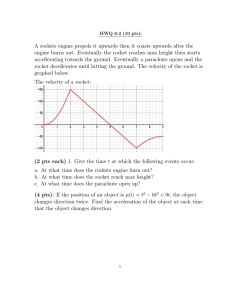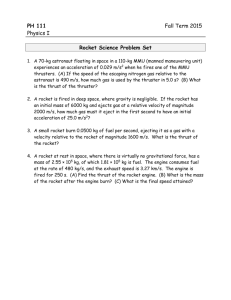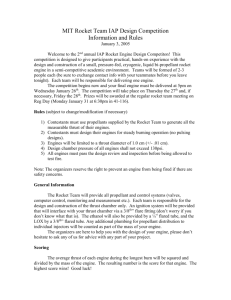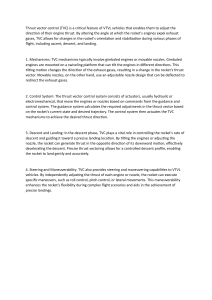d e s i g n o... The F-1 Rocket Engine
advertisement
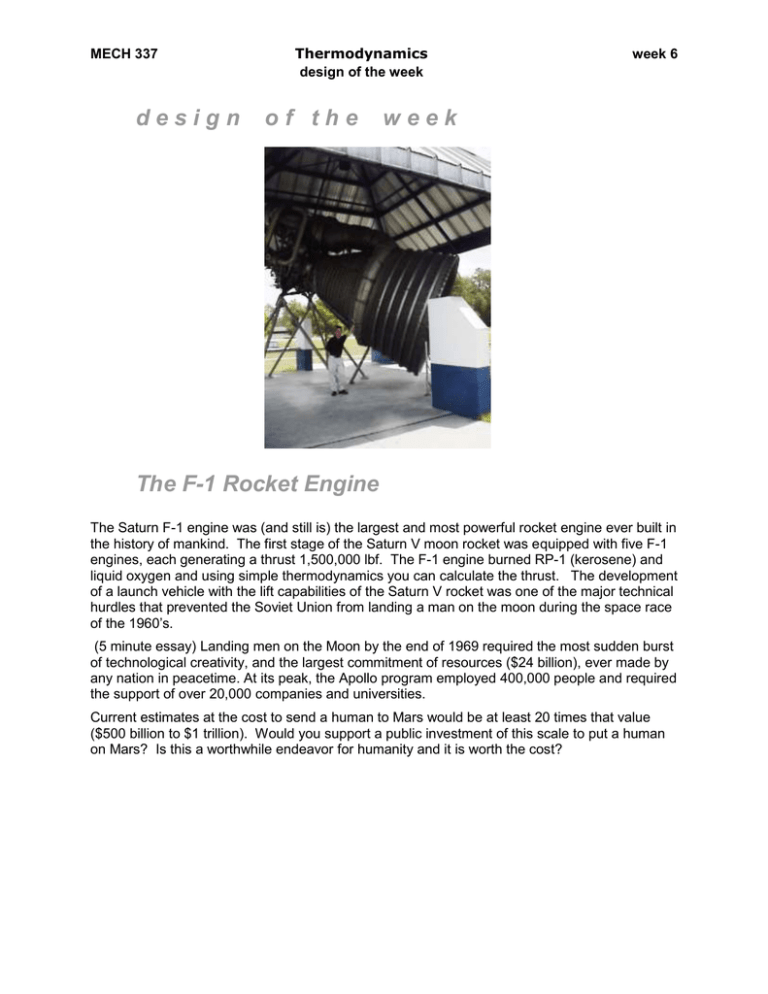
MECH 337 design Thermodynamics design of the week of the week 6 week The F-1 Rocket Engine The Saturn F-1 engine was (and still is) the largest and most powerful rocket engine ever built in the history of mankind. The first stage of the Saturn V moon rocket was equipped with five F-1 engines, each generating a thrust 1,500,000 lbf. The F-1 engine burned RP-1 (kerosene) and liquid oxygen and using simple thermodynamics you can calculate the thrust. The development of a launch vehicle with the lift capabilities of the Saturn V rocket was one of the major technical hurdles that prevented the Soviet Union from landing a man on the moon during the space race of the 1960’s. (5 minute essay) Landing men on the Moon by the end of 1969 required the most sudden burst of technological creativity, and the largest commitment of resources ($24 billion), ever made by any nation in peacetime. At its peak, the Apollo program employed 400,000 people and required the support of over 20,000 companies and universities. Current estimates at the cost to send a human to Mars would be at least 20 times that value ($500 billion to $1 trillion). Would you support a public investment of this scale to put a human on Mars? Is this a worthwhile endeavor for humanity and it is worth the cost?
